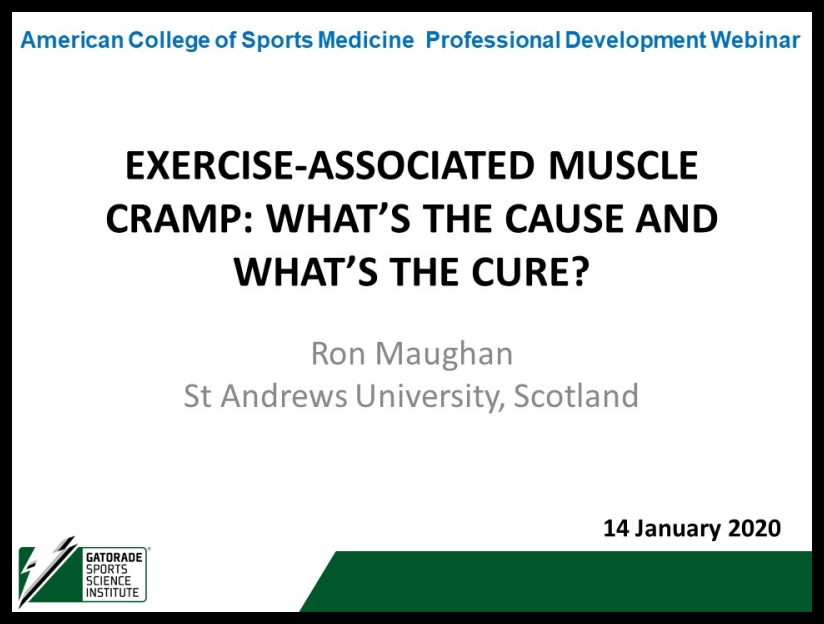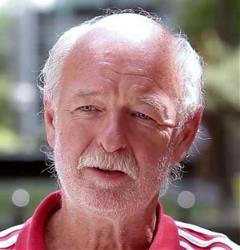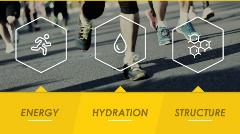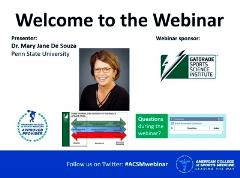Ron Maughan, Ph.D. |
March
3, 2020

The Gatorade Sports Science Institute (GSSI) and ACSM recently hosted an industry-presented webinar with Ron Maughan, Ph.D., entitled Muscle Cramping During Exercise. This is Part I of the Q&A.

Read Part 2 of the QnA here
Several questions were asked by attendees during the webinar and the answers pertaining to electrolytes, potential remedies and more are below.
Q: Is there any known link between low potassium and muscle cramps?
A small number of studies have collected blood samples from athletes who have recently experienced muscle cramps. In some cases, samples are also available before the onset of cramping. The results have generally shown that plasma electrolyte concentrations, including potassium, are not different between athletes with cramp and those without cramp. This applies to measurements taken before and after an episode of cramping, so blood samples taken before exercise cannot be used to predict those who will experience cramping. Measurements made after cramping, however, are difficult to interpret for several reasons. Samples have not been taken at the time of cramping, but usually only at some variable time afterward. Cramp occurs in the muscle, and measurements made on blood samples may not reflect changes that take place in the muscles during exercise. Even if changes or differences were observed, it would be difficult to know if these caused the cramping or were caused by the cramps.
Q: Is there any evidence that muscle cramping could ever be damaging to muscle tissue?
Cramps are extremely intense and painful. It would be surprising if there was not some damage to at least some muscle fibers after a bout of cramping. Muscle damage is usually assessed by measuring concentrations in the blood of large protein molecules that are usually found inside muscle cells. These molecules are too large to pass through the small pores in the muscle membrane, so the escape of only these molecules indicates damage to the membrane. There are some data from industrial settings to suggest that cramp will cause an increase in the concentration of muscle-specific proteins in the blood. This seems to confirm that an episode of muscle cramping will indeed cause some degree of muscle damage. Interestingly, there is also a study on ultramarathon runners showing a tendency for the pre-race concentration in the blood plasma of one of the commonly used markers of muscle damage to be higher in runners who experiences cramps during a race.
Q: Might local concentrations of lactic acid be a factor?
There is no evidence to link muscle cramps during exercise to high levels of lactate (lactic acid) in the active muscles. It would be surprising if such evidence were to emerge. Cramps occur most commonly during prolonged exercise, but lactate concentrations are generally low in such exercise. In high-intensity, short-duration exercise, very high levels of lactate may be present in the active muscles and in the blood, but cramps are not so common in this type of exercise.
Q: Why has the medical community vilified salt so much over the past few decades when the larger problem is lack of salt?
Many people consume more salt on a regular basis than is good for them. In many – but not all – individuals, a high salt intake is linked to high blood pressure, heart disease and stroke. For these individuals, reducing salt intake will bring health benefits. It is hard to target those individuals at risk, however, so the common approach is to advise all adults to reduce dietary salt intake to not more than about 6 grams per day (that’s about 2.4 gram of sodium). This may be fine for most sedentary individuals, but for those working hard, especially in hot environments, this amount of salt can easily be lost in a training session or competition lasting 1 to 2 hours.
Losses vary greatly between individuals even when exercise and environmental conditions are the same: variations in both sweating rate and sweat salt concentration account for these differences. During periods of intensive training, individuals with high salt losses may need to ignore the health guidelines on salt intake. There is some evidence that a high salt intake will result in increased sweat salt content, but there is also good evidence that some individuals working hard in hot weather will have very low levels of salt in their urine, suggesting that the body is trying to conserve salt.
Q: What is the best protocol to manage and advise an athlete for recurrent muscle cramping episodes?
As we do not know what causes cramp, it is difficult to recommend strategies for avoiding it. It seems sensible to ensure adequate hydration status while avoiding excessive drinking: common advice is to drink enough to limit weight loss to no more than about 2% of the starting body mass and not to drink so much as to gain weight. When sweat losses are high, electrolyte-containing drinks – most especially those containing sodium – are preferred over plain water. Those who experience cramp frequently should be prepared to experiment with different strategies to try to find something that works.
Q: Are there other kind of cramps associated with electrolyte imbalance?
Muscle cramps are relatively common in patients undergoing renal dialysis, when there are usually disturbances of electrolyte balance.
Presenter:

Ron Maughan, Ph.D., University of St Andrews| Scotland, UK
Ron obtained his BSc (Physiology) and Ph.D. from the University of Aberdeen and was based in the Medical School there for almost 25 years before moving to England. He is now Visiting Professor at St Andrews University. He spent much of his career trying to understand the physiological responses to exercise and the nature of fatigue but has included many digressions along the way. He chairs the Nutrition Working Group of the Medical and Scientific Commission of the International Olympic Committee and is a director of the IOC Diploma programs in Sports Nutrition, Sports Medicine and Sports Physical Therapies.
Viewpoints presented in this blog reflect opinions of the author and GSSI and do not necessarily reflect positions or policies of ACSM.
View More from GSSI

Fueling the Extra Mile: The Science of the Endurance Athlete Part 2

The Female Athlete Triad & Sports Nutrition Strategies for Recovery Webinar Q&A